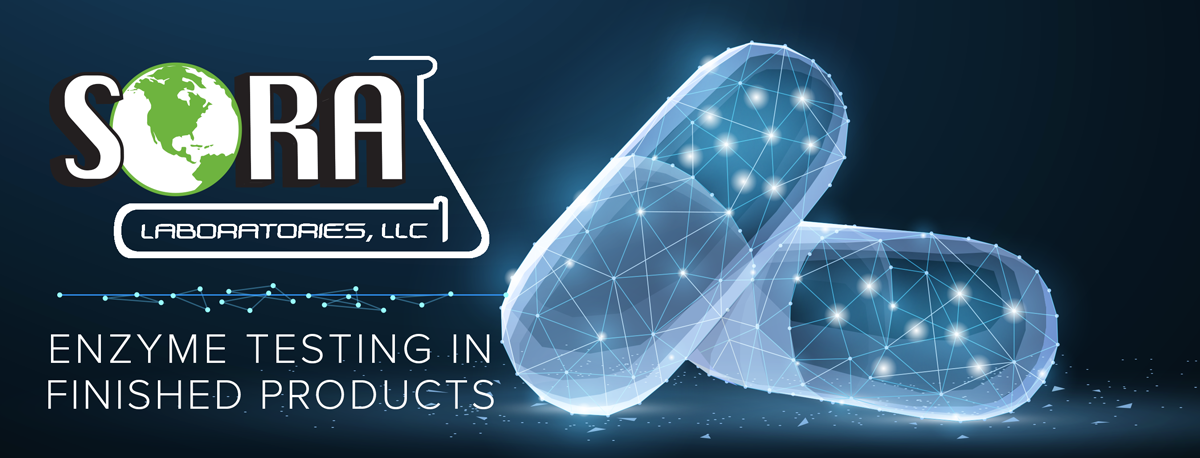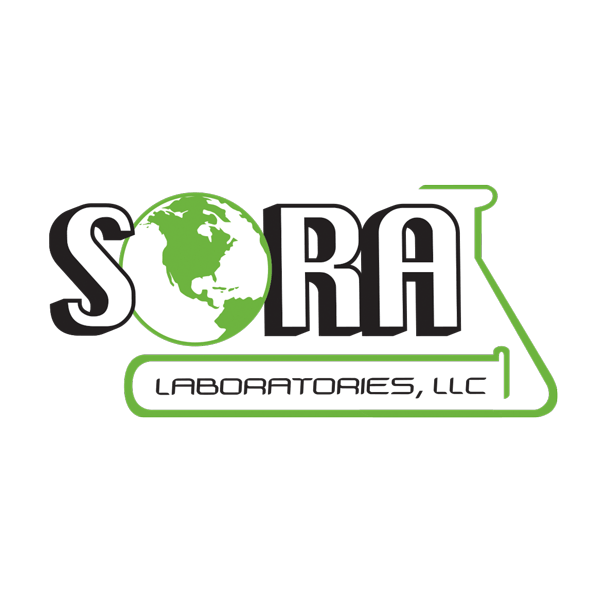SORA Labs has been testing enzyme activity assays and probiotic enumeration for more than 30 years. In fact, we were the first lab to add enzyme activity assays to an ISO/ICE 17025:2015 scope of accreditation in the U.S. Most of the methods we use come from the USP/FCC, BP, JP and other compendia, which are designed for raw material testing. One question we hear frequently is if it’s possible to test enzyme activities in finished products containing an enzyme blend. The answer is YES! We can test enzymes in finished products, however, like most analyses, it’s not as straight forward as raw material testing. Based on these experiences, we have put together a list of common interferences seen with finished product enzyme testing.
1) Combined Protease Effect: This occurs when several proteases are mixed together in a single blend. The protease activity of each enzyme is magnified by synergistic effects and boosts the protease activity. Enzymes are standardized to a single activity but may have other non-standardized activities present. These non-standardized activities are called side activities and can cause the proteases to show higher than expected results.
2)Enzyme/Carbohydrate Interference: The most common observation of this phenomena is with lactase but can be seen with other enzymes also. Lactase results often fall below label claims because of carbohydrates in the blend.
3) pH Co-Ingredient Interference: Enzyme activity assays are pH and temperature- controlled reactions. When the assay conditions are altered, the reaction may be affected, and the method may not perform correctly. Ingredients like betaine HCl, lemongrass, calcium carbonate, ox bile, and other high or low pH ingredients may swing the pH of the reaction solution outside the ideal method pH. Sometimes adjustments can be made to allow the reaction to run, but this is not always the case.
4) UV Co-Ingredient Interference: Many enzyme activity assays have a UV-Vis endpoint. If botanicals or other chemical ingredients are included in the enzyme matrix finished product, these ingredients may cause UV interferences. Methods that look for a change in UV absorbance could show inaccurate readings if these co-ingredients have similar UV characteristics.
Providing as much information about your product before testing begins will help determine possible interfering ingredients. When a testing lab is an extension of your team, you have a tremendous asset, because all these interference scenarios can be proven with testing.
We often use small sized, formulation-specific, lab blends, which allow us to remove the interfering ingredient(s) and then test the activity again. If the recovery is improved and the results meet label claims, then the product interference is confirmed.
We can also perform spike studies and measure the recovery of a known enzyme spike. Adding a known amount of enzyme into the finished blend and then testing for activity, will help determine the interference. When only partial recovery of the spike is observed, then this shows that there is interference with the testing.
Getting the blend testing and interferences figured out at the product development stage is very important to preventing product delays later in the process. Once products are ready to be shipped, then it is often a stressful scramble to understand why label claims are not being met. SORA Labs is here to help! Let us test your products so you can understand any interferences that are present. Remember, understanding your product’s unique characteristics early on, will help set the stage for successful manufacturing and sales.
Arsenic, Cadmium, Lead, and Mercury…Why Should You Care?
Heavy metals—What are they and why should you be concerned about them? The elements known as heavy metals include arsenic, cadmium, lead and mercury. These elements can be present in the soil that your materials are grown in or found in facilities where your products are produced. These contaminates can pose a health risk to your consumers and could even cause poisoning if they are consumed in high enough quantities. Due to their high health risk, the FDA requires testing for these analytes to be compliant with their GMP regulations. You may be asking yourself some questions regarding this testing and SORA Labs is here to answer them! Some of the most commonly asked questions and their responses are below:
Q: What stage of manufacturing can you test for heavy metals?
- Raw Material
- When you test your raw materials, you are more likely to catch a “bad” ingredient before you add it to your blend and ruin your entire batch.
- Finished Products:
- Finished product testing confirms that the product meets required standards once all ingredients are blended and no heavy metal contamination occurred during the manufacturing process.
Q: Why Choose the ICP-MS method?
- There are other methods that can be utilized for heavy metals analysis, however, ICP-MS allows the laboratory to achieve lower detection limits when compared to ICP-OES. This lowered detection limit allows for more accurate and precise data on your product.
- Prop 65 requires certain limits of heavy metals to be met. Some prop 65 results can be obtained by ICP-OES; however, the serving size becomes a large factor. By using ICP-MS the factor of serving sizes becomes less of a deterrent. We are now able to achieve prop 65 levels on a larger variety of serving sizes.
If you have any remaining questions, please do not hesitate to contact us. SORA Labs would love to assist you with making sure your consumers are getting a top quality product! We offer ICP-MS heavy metal and mineral testing along with many other assays, ID and contaminate testing needed in the dietary supplement industry. Contact us today!


